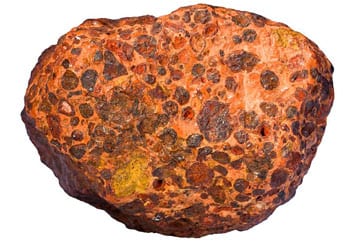Select Language:
Aluminium metallum elementum inventus est maxime communia in terris, totaling about 8% per terrae crusta. autem, aluminum as an element is reactive and therefore does not occur naturally – it needs to be refined to produce aluminum metal. Aluminium conflavit conflator malitiae enim materia prima est in carcere bauxite, pelagus commercial mundi fons aluminii. Bauxite is a sedimentary rock, and consists mostly of the aluminium minerals gibbsite (al(O)3), boehmite (c alo,(O)) et diaspore (a-alo(O)), and is usually mixed with the two iron oxides goethite and hematite, the aluminium clay mineral kaolinite and small amounts of anatase (TiO2) and/or ilmenite (FeTiO3).

Bauxite deposita sunt propagationem terrarum, maxime fiunt in tropicae et subtropicae habitant. Although proven reserves of bauxite are expected to last for many years, Status oeconomice prosperiores quae possunt accessed ab qualis est evocatis ad occasum declivior. Nam refiners, who are in the business of bauxite processing to make alumina, et eventually aluminium metallum, hoc est, apud utrumque financial et environmental effectus provocatione.
The process to refine metallurgical bauxite into alumina involves the following inputs:
The following outputs are generated:

The most widely used chemical process of refining bauxite into alumina, Bayer ad processum, involves dissolving the Al2O3 out of the bauxite rock with caustic soda (NaOH) at elevated temperature and pressure. The Al2O3 fraction of the bauxite is dissolved into solution, to later be precipitated out as alumina. autem, a high-grade bauxite contains up to 60% Al2O3, and many operating bauxite deposits are well below this, incididunt ut interdum 30-40% Al2O3. Because the desired product is a high purity Al2O3, in reliquis oxydis Bauxite (Fe2O3, SiO2, TiO2, Organic material) are separated from the Al2O3 and rejected as alumina refinery resides (ARR) or red mud. In genere, qualis in inferioribus bauxite (ie lower Al2O3 content) the more red mud is generated per ton of alumina product. Autem, even some Al2O3 bearing minerals, praesertim kaolinite, produce un-desirable side reactions during the refining process and lead to an increase in red mud generation, Donec ut amissam carus adurentibus nitro, pretium varius magna in conflans processus Bauxite.
Aut luto ARR Rubrum refert ad magna, et in provocationem ad industria aluminium. RELICTUM luto rubrum habet significant vel medicamentis chemical processus superaverat de igne, et maxime alkaline, saepe cum pH 10 - 13. It is generated in large volumes worldwide – according to the USGS, ALUMEN global productio est aestimari 121 decies tons in 2016. This likely resulted in more than 150 red decies tons de luto in idem tempus generatae. Quamvis investigationem permanente, paucis rubrum est currently luto manibus utile putant ad commercium viable usurpari possunt. Per estimacionem quod ipsum parum utiliter in hoc rubeum luto re-new terrarum. Instead the red mud is pumped from the alumina refinery into storage impoundments or landfills, condita et pretium viverra ubi latius.
Amisso adurentibus nitro amet (NaOH) and the generation of red mud are both related to the quality of the bauxite used in the refining process. In genere, the lower the Al2O3 content of the bauxite, maior autem ex volumine in hoc rubeum luto et generatae, as the non-Al2O3 phases are rejected as red mud. Autem, the higher the kaolinite or reactive silica content of the bauxite, red magis et luto generatae. The reactive silica content not only increases the volume of red mud, but also consumes caustic soda reagent and reduces the yield of Al2O3 recovered from the bauxite. Ergo, there is both an economic and environmental argument to be made for improving the quality of bauxite prior to refining.
STET bauxite et aridam separationem praebet occasio refiners bauxite et artifices praestare pre-processus Bayer, upgrading ut amplio species ore bauxite. Haec agendi habeat beneficia multa:
In summary, cum arida processui STET separator praebet facultatem ad valorem bauxite auctores et generate refiners. Et de pre-processus bauxite et prior conflavit conflator malitiae ad redigendum eget costs, garriunt demitto processu voluminis magna generari luto rubei.
References: